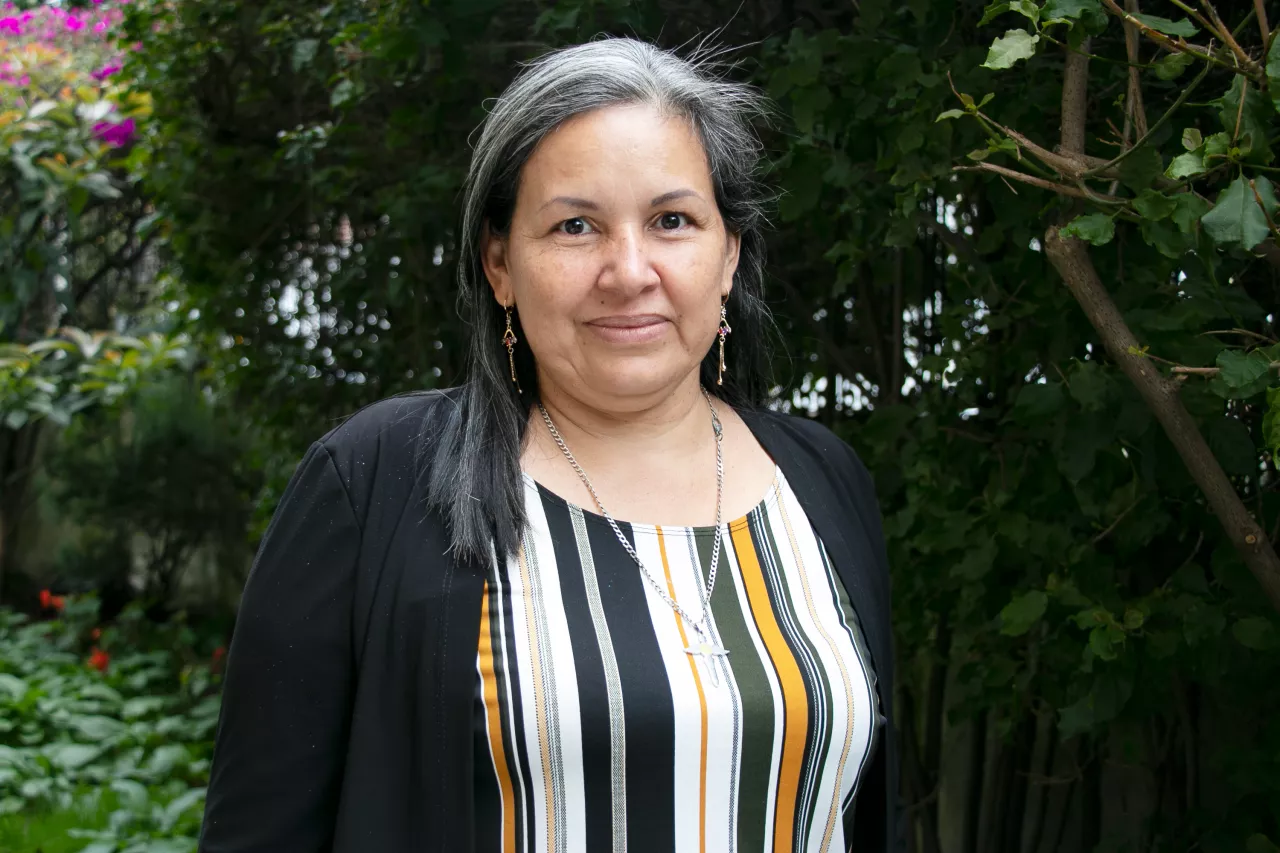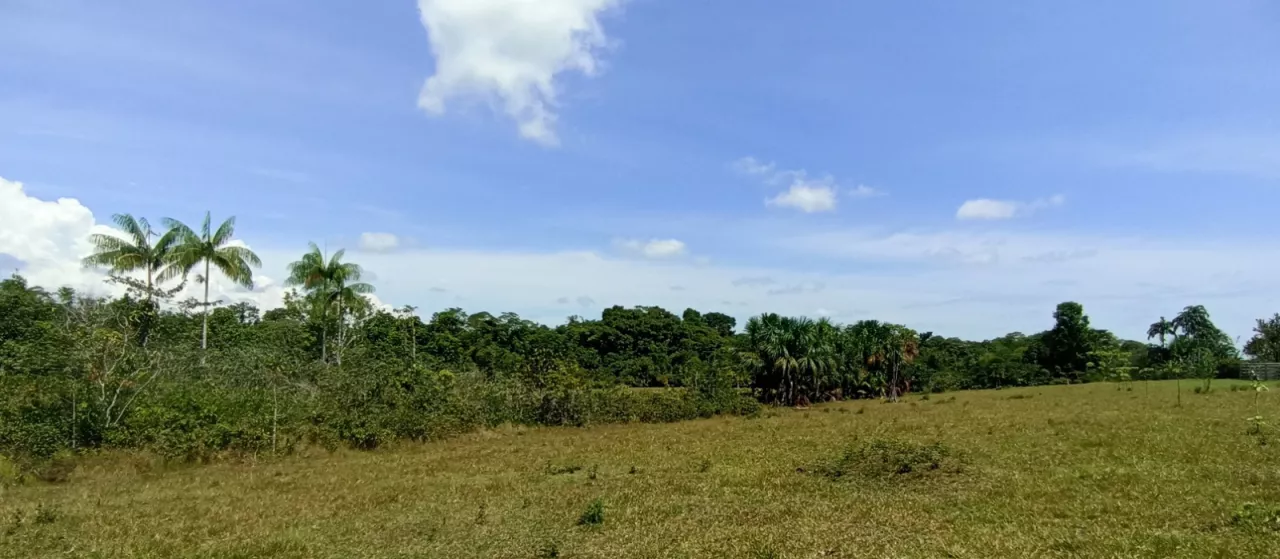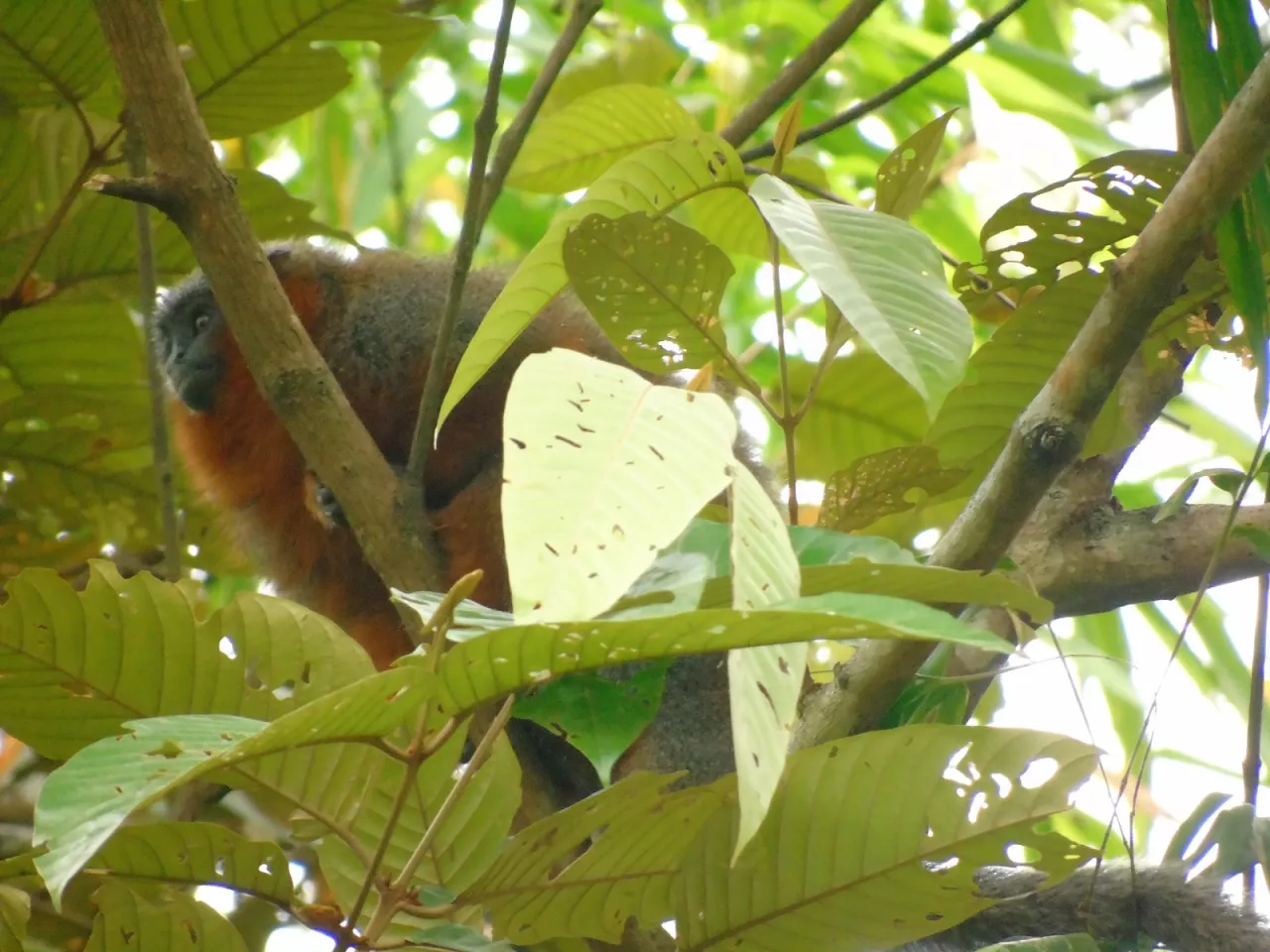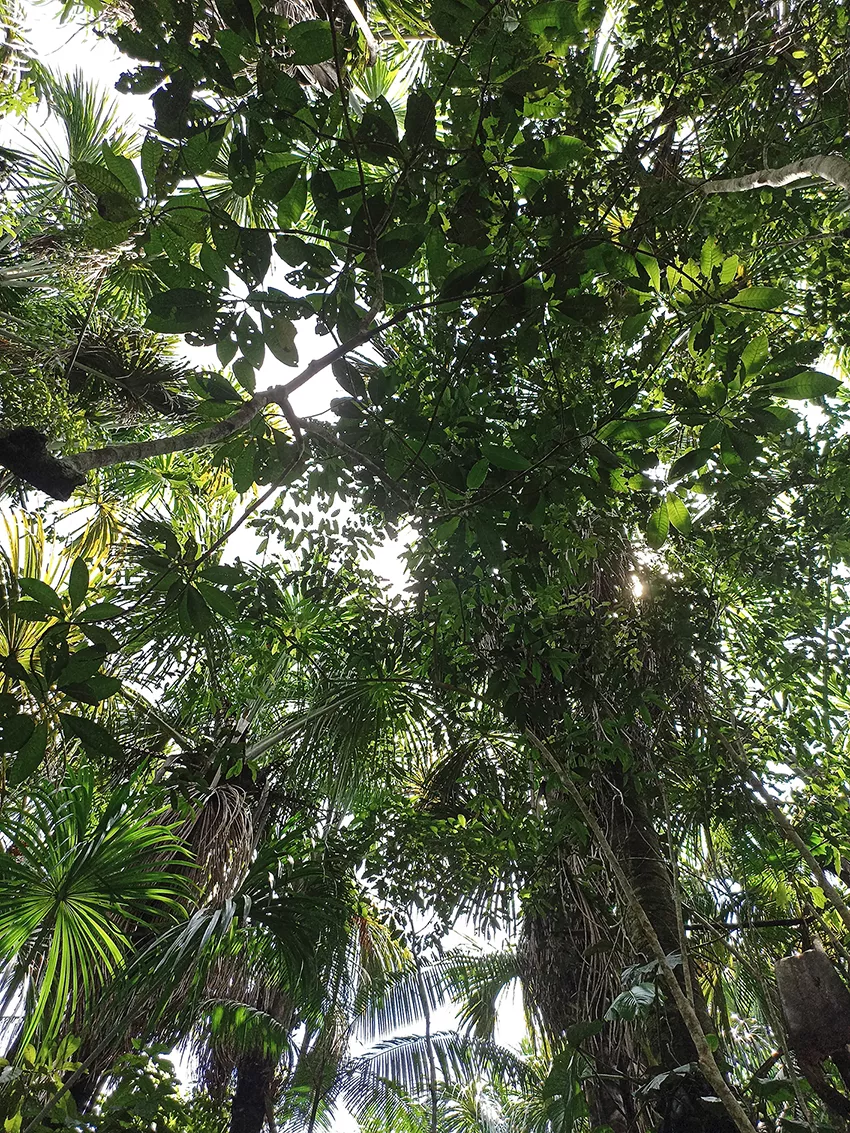Primates and peasants in a joint struggle for survival
They asked and answered the question of how to live in ruins that are still inhabited, together with the ghosts and the living. (Donna Haraway)
Donna Haraway is a scientist who uses science fiction to define the current civilisational crisis as "a limit-event characterised by the destruction of the spaces and times of refuge of other people and other beings". In this way, the author constructs collective narratives with social organizations, intellectuals and environmental activists, in which other worlds to come are woven. Possible futures that reconstruct multi-species utopias, where care, life and death are not defined by the market values that human beings have imposed on themselves and their environment.
Haraway weaves scientific knowledge with the ancestral knowledge of indigenous, black and peasant communities, women in resistance, and social and environmental organizations across the Americas to construct a speculative fable: "Camille and the Children of Compost". An imagined community of survivors who inherited the pain caused by genocides, the great migratory flows of all kinds of species, the mountains and forests turned into pastures, the ruins of ecological destruction, but also the knowledge, creativity, solidarity and strong kinship relations between living human and non-human species that make it possible to build that other possible world for the next generations of what the author calls "the communities of compost".
This fictional reality has a mirror in the real Colombian context; the interaction of cold waters from the depths of the Pacific Ocean with strong winds from the north has kept the country in a permanent winter season for the past couple of years. The "La Niña” phenomenon, experts say, is responsible for the heavy rains, frosts and low temperatures. In this period, structural poverty, ecological devastation, idleness and lack of planning on the part of decision-makers have generated a new cycle of landless, roadless, roofless and animal-less impoverished human beings.

But this story is incubated elsewhere. In the years since the pandemic, Bogotá has reverted to the cold, grey city described by Colombian writer Mario Mendoza in his novels. The perfect setting for this dystopia. Maydany Salcedo has landed in this harsh city, forced to leave her territory as the only option to save her life and that of the organization she presides, the Asociación Municipal de Trabajadores y Trabajadoras Campesinas de Piamonte Cauca ASIMTRACAMPIC (Municipal Association of Peasant Workers of Piamonte Cauca ASIMTRACAMPIC).
The Colombian state's systematic non-compliance with the Final Peace Agreement, the reconfiguration of a new cycle of conflict throughout the national territory and the dispute between armed actors in the departments of Putumayo, Caquetá and Cauca, has meant that this peasant organization, and in particular Maydany, continues to be the victim of stigmatisation, threats, attacks, surveillance, persecution and forced displacement, as has been the case practically since the association was created.
In one of several sit-down conversations with Maydany, as part of our accompaniment and support for her work, she narrates the threats and harassment she has suffered for defending the Peace Agreement. For a moment, her story distances itself from humans and begins to tell the story of the Caquetá “mico bonito” (pretty monkey, in Spanish), a species endemic to the Amazonian foothills and at critical risk of extinction, which was first recorded in 2010 by primatologists Thomas Defler, Marta Bueno and Javier García.
As in the compost communities of Haraway's speculative world, Maydany's account reaffirms that reality surpasses fiction, when she says: "We are fighting so that this little monkey that moved from Caquetá to our farms in Piamonte in the lower Cauca region, has spaces where it can feed and continue to reproduce, because this animal, having nowhere to move, is reproducing among (its own) families and so the species degrades and dies out. That is why we have made community agreements with 130 families to conserve 1868 hectares of forest that we want to connect in biological corridors that allow the monkey to reproduce with other families and thus survive". It is clear to me that these communities of peasants, primates, tropical animals and other critters have created kinships and collective ways of surviving in the midst of war.

After months of conversations with Maydany and after a journey of more than 400 kilometres from Bogotá, we arrived in the rural area of Piamonte. By boat we crossed the Fragua Grande river, which divides the border between the departments of Caquetá and Cauca, walked to the village of El Porvenir in the village of Fragua Viejo and stayed at the farm of Mr. Carlos, a member of ASIMTRACAMPIC. From this place we started the walks with the sole objective of seeing the pretty monkey.
During three days we walked around 20 kilometres, passing through the villages of Fragua Viejo, Bajo Congor and Yapurá. It is a privilege to be able to make this journey, as it is only possible thanks to the mutual trust with the Association and its legitimacy in the territory; these villages are a field of dispute between the “Comandos de Frontera” illegal armed group, the Carolina Ramírez front of the FARC dissidents and local drug trafficking groups. All these armed groups do not like it very much when outsiders appear on these farms.
Plecturocebus Caquetensis means "Caquetá long-tailed monkey". When Thomas Defler and his scientific colleagues recorded it in 2010, they included it in the genus Callicebus, which means "pretty monkeys". Popularly, the settler farmers of the region recognise it as the Caquetá marmoset, Macaco or Tongo. They say that they have seen them since the middle of the last century, but that when the forests were converted into pastures or coca fields, the monkeys migrated towards the mountains and were lost from sight.

On our tour we managed to see them on two occasions, the first time in a forest redoubt in the village of El Porvenir, at approximately 10:00 am. That day we left the farm at 6:00 a.m. and walked through the pastures to the river while we waited for a vocalisation (which is the name given to the particular sounds emitted by an animal species) that would allow us to follow the trail. In the meantime, thanks to the guidance of Mauricio, a veterinarian who is part of the Association, we were birdwatching along the way and managed to spot more than 50 different types of birds.
On the way back, before arriving at the farm, we heard the first vocalisations and we started looking for it. Mr. Carlos gave us some signs, he said something to Mauricio and they then agreed on the direction where we should continue walking. They explained to us in whispers that what we were hearing involved at least two families, one vocalises first and the other answers. We walked around the reedbush several times listening to their characteristic sounds and finally we managed to see one of the family members wandering through the trees about 6 metres away. For a few seconds the monkey stopped, let us observe it with the binoculars and continued on its way.
We noticed that, as described by the scientists, the colour of the beautiful monkey is between brown with yellow stripes on the back, some reddish tones on the belly and a long tail that stands out and makes it look bigger than it really is; according to Thomas Defler, the monkey measures and weighs: "between 50 and 70 cm and between 800 and 1500 grams". The monkey is really beautiful, and it is evident that it is an active part of the peasant organization, with a function within it. They are regenerators of the ecosystem; they disperse seeds in the forest and help other trees and plants to grow. Their peasant relatives do their part in protecting the forest, even when social and economic pressure pushes them into a corner and forces them to cut down mountains to scavenge for food, to throw an extra cow, to cultivate a banana plantation or to secretly crop a coca plantation. Even in these situations, the farmers leave behind a mountain line so that the monkey can go on its way.

Until recently we knew that it fed on seeds, fruits and young leaves, but from Johanna Villota, Gerlando Delgado and other researchers who have been visiting it in these mountains and have seen it eating bamboo leaves and yarumo fruits, we know that it adapts to ecosystems intervened by humans and that these popular crops in the area can be an option to continue protecting it.
We returned with the satisfaction of having seen the pretty monkey. On the way, Mr. Carlos explains to us that we are strangers to the monkeys, which is why it was so difficult to see them. On the other hand, for him, his family or some other inhabitants of the region, it is common to meet them on the road and to see them playing for long periods of time among the trees.
Unfortunately, the life of this species is critically endangered, as confirmed by the International Union for Conservation of Nature IUCN. If this encounter with the pretty monkey and its natural and rural environment made one thing clear to us, it is that, just as it is clear that without conservation there will be no people, without people conservation is not viable.
The protection of the Plecturocebus Caquetensis is intimately linked to the protection of ASIMTRACAMPIC, to the return of Maydany, Jonathan and other persecuted farmers who have had to abandon their farms to save their lives. Only by saving ASIMTRACAMPIC and pretty monkey of Caquetá will it be possible to fulfil Colombian President´s promise to turn Colombia into a world power for life. Otherwise, the extinction of the monkey and its relatives the peasants will be a collective failure as a State.
Text written by: César Augusto Muñoz M, country programme coordinator, ForumCiv Latin America and the Caribbean
This article was also published in a Spanish version in the Colombian e-paper Raya on 23rd February 2023: Entre el confinamiento, el desplazamiento y la extinción. Primates y campesinos en la lucha juntos por sobrevivir
Other recent articles

ForumCiv’s social media accounts labelled as “extremist materials” in Belarus
Important message to our Belarusian followers. Any interaction with our content can now lead to legal consequences in Belarus. Please read the information below and take the necessary precautions for...

ForumCiv enters new strategic partnership
ForumCiv is proud to announce a new three-year strategic partnership with Sida, totalling SEK 137 million.

ForumCiv at COP30: African voices at the centre of climate justice
ForumCiv is participating in COP30 in Belém to amplify the voices of African civil society, who stand at the frontlines of the climate crisis yet are often excluded from decision-making.